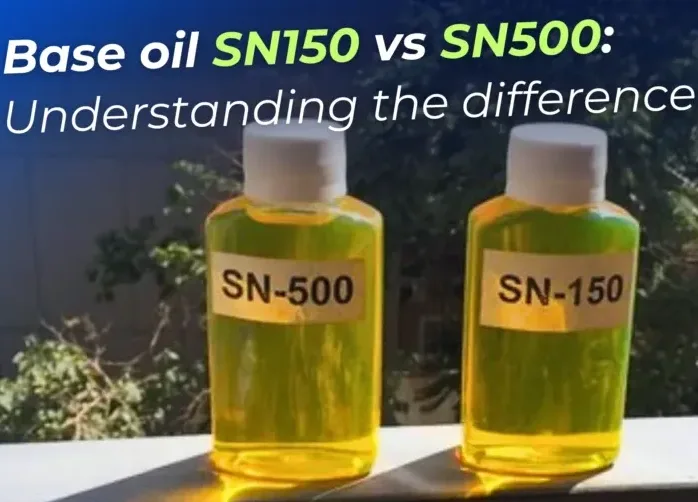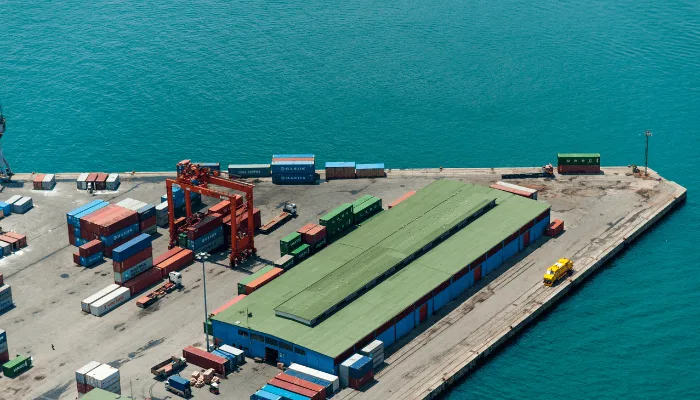
SN150 vs SN500: Key Differences in Performance and Pricing
In the lubricants industry, base oil selection plays a critical role in the performance and cost of the final product. Among Group I base oils, SN150 base oil and SN500 base oil are the most widely used. While they share a common refining process, their differences in viscosity, applications, and price trends make them suitable for very different markets.
Technical Specifications: SN150 vs SN500
| Property | SN150 Base Oil | SN500 Base Oil | Key Takeaway |
|---|---|---|---|
| Viscosity @ 40 °C | 135–165 cSt | 485–515 cSt | SN500 is thicker and stronger |
| Viscosity Index (VI) | 95–100 | 95–105 | Similar VI, different flow behavior |
| Pour Point | -6 °C | -3 °C | SN150 flows better at lower temps |
| Flash Point | ~200 °C | ~220 °C | SN500 has higher thermal stability |
| Color (ASTM) | ≤1.5 | ≤2.0 | Both are pale to light yellow |
This comparison shows that SN150 base oil is better suited for light-duty lubricants, while SN500 base oil delivers stronger performance for high-load applications.
Performance Differences
SN150 Base Oil – Its lighter viscosity makes it ideal for engine oils, hydraulic fluids, and industrial lubricants. It also improves cold-start properties in automotive lubricants.
SN500 Base Oil – With higher viscosity and film strength, SN500 is used in gear oils, greases, and heavy-duty engine oils, where thermal stability and protection under pressure are required.
Additive Compatibility – Both grades blend easily with performance additives, but SN150 provides better solvency, while SN500 enhances durability.
Pricing Trends: SN150 Price vs SN500 Price
In 2025, the SN150 price continues to remain slightly lower compared to SN500 price due to its lighter grade and wider availability.
SN150 base oil price (CIF Asia & Middle East): $930–$980/MT
SN500 base oil price (CIF Asia & Middle East): $950–$1,010/MT
While the difference may appear small, the SN500 premium reflects its added performance benefits. Market analysts expect stable demand growth for SN150 in automotive oils, while SN500 demand is rising in industrial and marine sectors due to heavy-duty needs.
Global and Regional Market Outlook
Asia: High consumption of both SN150 and SN500 in China, India, and Southeast Asia, where lubricant demand is expanding.
Middle East: Export hubs in Iran, UAE, and Saudi Arabia remain strong suppliers of both SN150 and SN500.
Europe: Demand is shifting toward Group II base oils, but Group I grades like SN150 and SN500 still hold a niche market in industrial uses.

SN150 Base Oil – Lower viscosity, cost-effective, versatile in automotive lubricants.
SN500 Base Oil – Higher viscosity, strong thermal stability, ideal for heavy-duty use.
Price Spread – SN500 typically commands a $20–30/MT premium over SN150.
Global Demand – Both grades remain in demand across Asia, Middle East, and Europe.
Looking for solvesso suppliers in Iran ?
- Contact Us today and get connected with producers and export-ready logistics.
- sales@PetroExportHub.com

Related posts
Mono Ethylene Glycol (MEG) serves as a cornerstone for modern antifreeze and coolant formulations, offering reliable freezing protection and heat resi . . .
Explore Solvent 100’s specs, uses, and export opportunities from Iran. Ideal for paint, ink, and adhesive buyers in India, Turkey, UAE, and Africa. . . .
Explore everything you need to know about exporting sulphur from Iran in 2024 — including types, packaging, documents, ports, prices, and top import . . .
Explore Iran’s top ports for petrochemical exports, including Bandar Imam Khomeini, Assaluyeh, and Bandar Abbas. Compare infrastructure, accessibili . . .
Learn the key differences between polypropylene (PP) and polyethylene (PE), their applications, advantages, and how to choose the right polymer for yo . . .
Discover how a Turkish plastics manufacturer reduced costs by 22% through importing HDPE from Iran. Real-world case study by PetroExportHub. . . .
Learn why Iran is a leading exporter of polyethylene (PE). Discover grades, global applications, and how PetroExportHub connects buyers with top suppl . . .
We are here to answer your questions....
Petro Export Hub
PetroExportHub specializes in the export of premium-grade petrochemicals, minerals, and industrial chemicals from Iran, serving international markets with reliability, transparency, and tailored logistics solutions
Tehran Office
Phone:
0214865484 | +989127607241
Address:
Tehran..
China Office
TEL :
0211400
Address:
Zhongzhou Bie Lu, Zhongcheng Street, Yiwu City, Zhejiang Province, China
Quick Access
Quick Access
- Contact Our Sales Team
- Frequently Questions
- Shipping & Logistics
- Become a Partner
- Certificatins & Quality







